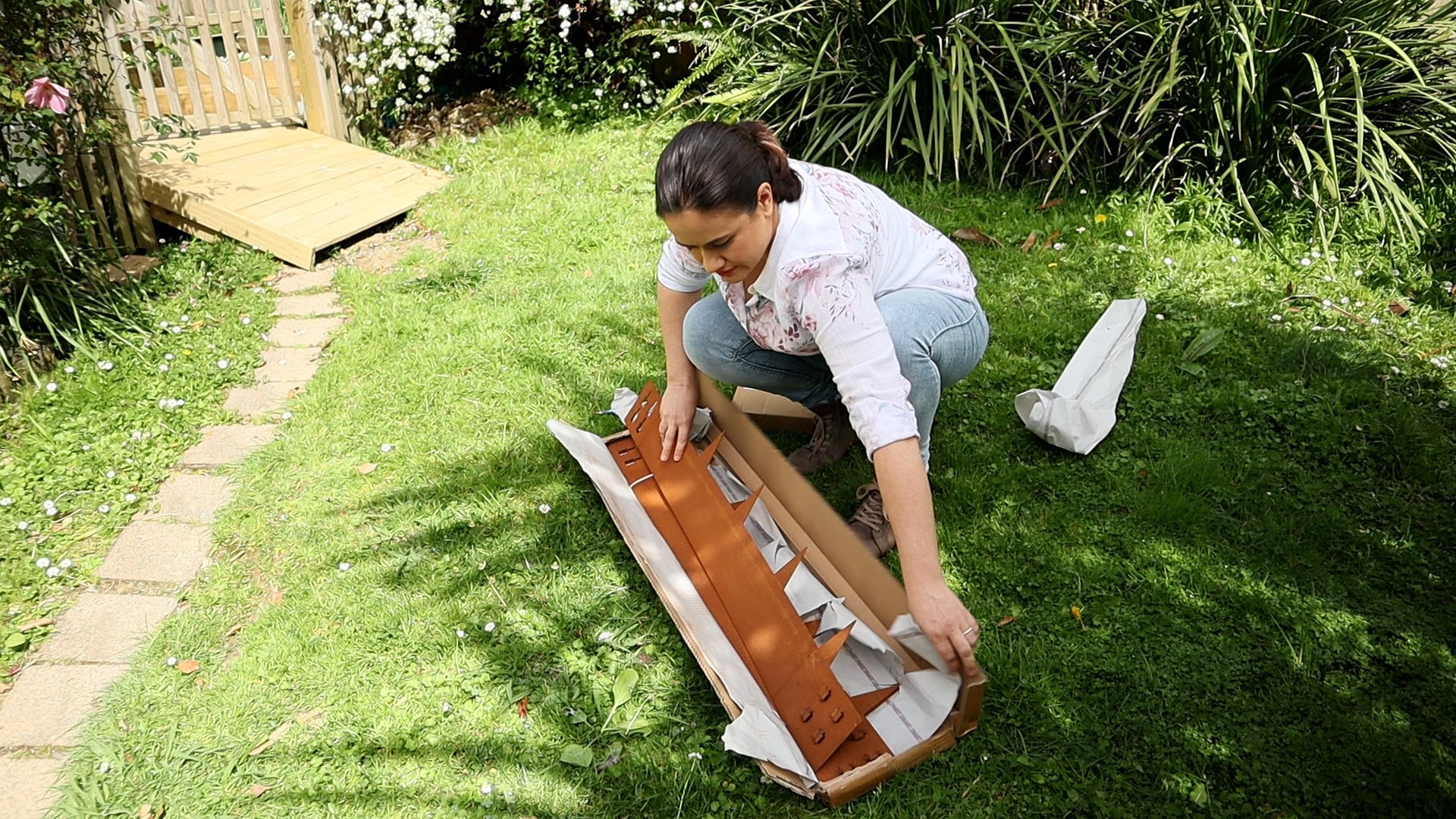
How to install Corten Steel Garden Edging: DIY Guide, Pros & Cons
If you have a garden, at some point you would have had to wrestle with messy garden edges where grass is either creeping onto your garden beds or mulch and bark are wandering onto your grass and pathways.
In some cases you might just want something to separate areas and sharpen the landscape without it costing the earth or needing professionals.
what is Corten Steel Garden Edging?
Corten steel garden edging is made from a durable, weathering steel. It develops a protective rust-like patina over time, making it long-lasting and low-maintenance and perfect for durable garden borders.
It can last anywhere from several decades to over 100 years, depending on the specific climate, environment, and how the material is used and maintained.
Factors like high humidity, salt air, and poor drainage can significantly reduce its longevity.
Why Choose Corten Steel Edging?
Corten steel is:
- Durable
- Rust protects the edging from corrosion
- Patina looks better over time
- Flexible design options
- Low maintenance
- Easy to install
One of the other benefits of corten steel edging is that you can create sharp straight lines and you can curve and bend it to your garden and design. From soft and gentle curves to sharp 90 degree angles.
Corten Steel vs Timber vs Plastic Edging
Timber:
-
Pros: Provides a warm, natural look that blends well with garden environments and is easily cut and shaped to fit design requirements.
-
Cons: Highly susceptible to rot, and decay, requiring frequent maintenance and replacement.
Plastic:
-
Pros: Lightweight, easy to transport and install, and not prone to rust or rot.
-
Cons: Can degrade, warp, and become brittle from sun exposure, resulting in a shorter lifespan. Lacks aesthetic appeal compared to other materials.
Corten Steel:
-
Pros: Develops a unique, protective rust patina over time, is highly durable, lightweight for transport, and provides a striking modern look.
-
Cons: Can be more expensive upfront, requires time to develop its signature patina, and the initial rust runoff may stain nearby surfaces.

Step-by-Step Installation Guide
-
The first thing to do is decide on your layout and garden design.
-
Measure the amount of edging needed for your design.
-
Optional but recommended - Dig a small trench about 50mm deep, this helps to secure the edging and gives you a clean finish.
-
Layout your edging and ensure that you can accommodate bends and curves through the centre of the edging and away from the interlocking clips.
-
Begin at one end and start connecting the edging and work your way around. Keep in mind to not hammer the edging into the ground fully just yet.
-
Once you’ve placed your edging, hammer it in to secure it in place.
-
For a cleaner, polished finish, slide the corten steel covers over the joins and hammer them into place.
 |
 |
 |
If you struggle to fit the covers over the joins, you may need to widen the covers. using a screw driver, wedge the fold open or use another edging cover and slip it into the fold sideways and wedge open slightly. It won't usually need much to allow the cover to slot over the joins comfortably.

Maintenance Tips
Corten Steel edging requires minimal maintenance. The natural rust patina will protect the edging.
Periodically clean the edging with a hose or water to remove debris, this also ensures more even rusting.
The edging can produce rust run off, especially in the early stages, which can stain nearby surfaces, you can either protect the surface by installing a protective barrier or create a spacing between the corten steel and the surface.
Generally corten requires very little maintenance, especially once the patina has fully developed.
FAQ’s
How long does corten steel garden edging last?
The lifespan of corten steel is dependent on the thickness of the steel and environmental factors. Thicker steel can last 50+ years and thinner steel can last up to 20 years, more or less.
Will corten steel stain nearby surfaces?
It can stain nearby surfaces, especially in the early stages of the rust patina forming.
Is corten steel edging safe for vegetable gardens?
Yes, Corten steel edging is considered safe for vegetable gardens, because the rusted patina it develops is a stable layer that doesn't leach harmful substances into the soil. The minimal amounts of naturally occurring minerals, such as zinc and iron, that may eventually enter the soil are not harmful, as zinc is an essential plant micronutrient
Can you install corten steel edging without a trench?
Our corten steel edging gives you the option for installing with and without a trench. For a no trench option, keep in mind the soil will need to be soft enough for the spikes to penetrate the soil and where the edging will not be a tripping hazard or get damaged. If you want your edging to be secure and safe, it is recommended to dig a trench approx half the height of your edging.
Corten steel edging offers a long-lasting, low-maintenance solution to messy garden borders. Whether you’re shaping a modern landscape or creating soft curves, it’s easy to install and built to last.
Explore our Corten Steel Garden Edging to get started.
GUDES & ADVICE
- Choosing a selection results in a full page refresh.
!





